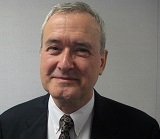 Harold Arkin mediates in the areas of Personal Injury/Insurance, Estates, Employment, and Commercial Matters (Civil Litigation). He obtained his LL.M. (ADR, 2002) from Osgoode Hall Law School and his B.A. (1969) and LL.B. (1972) from the University of Manitoba. He was called to the Manitoba Bar (1973) and the Ontario Bar (1995). As Mediator with Financial Services Commission of Ontario he was responsible for Accident Benefit Motor Vehicle Mediation for the Ontario Government.
Harold Arkin mediates in the areas of Personal Injury/Insurance, Estates, Employment, and Commercial Matters (Civil Litigation). He obtained his LL.M. (ADR, 2002) from Osgoode Hall Law School and his B.A. (1969) and LL.B. (1972) from the University of Manitoba. He was called to the Manitoba Bar (1973) and the Ontario Bar (1995). As Mediator with Financial Services Commission of Ontario he was responsible for Accident Benefit Motor Vehicle Mediation for the Ontario Government.
Opening Statements and Joint Sessions appear to be a dying breed. I always encourage opening statements in my mediations by telling counsel that the opening statement on their part can be quite short or as short as they want it to be. I will sometimes tell them this after I have met with them privately just before mediation begins, and if they decline I will ask them again, when I meet with both counsel jointly just after that, again, just before mediation is to start. I seem to find that this double approach results in being able to get many counsel who would otherwise decline agree to make an opening statement. Many counsel in this joint meeting will say that they each know the other’s case and that an opening statement is not necessary. But, they don’t consider that the mediator may not know their case, and it is possible that the opening statement might enable the mediator to glean relevant fact or facts that may have slipped through the cracks in the mediation brief and be an opportunity to change the course of mediation. However, I do not force the issue if they remain adamant.
An initial joint session joint session will allow the mediator to set the tone of the mediation. Before I started to write this article, I was going to address why opening statements and joint sessions are more popular in insurance mediations but not in employment mediations.
In motor vehicle insurance mediations, opening statements give the defence counsel their opportunity to thank the claimant for attending, to explain (or re-explain) the tort deductible and the threshold of permanent and serious injury to the claimant, and to tell the claimant, in plain language, what weaknesses defence counsel feels exist with the claimant’s case, including, any issues of contributory negligence in “plain English.”
Also, in insurance mediations, and with consent of Plaintiff counsel, I also like to ask the claimant to tell the other side how the accident has changed his or her life, especially in cases, where I have spoken with the claimant and counsel just before mediation, and sense that it would be a benefit to resolution to have Defence counsel and the adjuster see and hear the claimant directly as it would provide evidence of his or her credibility in court, or possibly address some issue post discovery.
I understand that many counsel in employment matters do not like to have a joint session nor make an opening statement to start the mediation.
However even with employment matters, I did have an employment mediation recently where Plaintiff counsel took the opposite approach and made a lengthy opening statement. But more importantly, the claimant also got to tell her story, which enabled Defence counsel to hear new information how one manager had set annual goal expectations for the claimant at a higher amount than claimant’s peers. The Defence counsel had not been aware of these new facts and found the claimant to be a credible witness. This led to a full and final resolution at mediation where discoveries had not yet taken place. The parties were spared the time and expense of further litigation and enabled the parties to end the employer/employee relationship on relatively good terms.
What I do try to insist on is at least having both sides sit in the same room for my introduction in an initial joint session. It really is important to make the clients, especially claimants in insurance matters, feel comfortable and understand the process. For the clients’ benefit, I explain that mediation is an opportunity to step out of the box, have an open exchange of information, and explore all options. The introduction sets the table by getting the parties to agree to the ground rules, allows me to explain confidentiality, my method of inquiry or reality check, and help make the clients (and often even the lawyers) more comfortable. It is a rare case where counsel will not even agree to at least sitting through my introduction.
As far as setting the ground rules in the introduction my standard practice is to tell the parties that I only have two rules. First, we can agree to disagree but we will not be disagreeable. Second, everyone will get a chance to speak but only one person will speak at a time and we will observe common courtesy with each other at all times. And finally, I ask everyone to agree. Invariably I do get agreement and where anyone is silent I just say that silence means consensus. I’ve only had one instance where a counsel said “no” but we were able to proceed anyway without event.
 Tahir Khrorasanee practices complex labour, employment and human rights disputes – representing some of Canada’s largest employers. Prior to joining Levitt LLP, Tahir practiced insurance litigation. Tahir graduated from Osgoode Hall Law School with a Master in Laws degree in Civil Litigation and Dispute Resolution.
Tahir Khrorasanee practices complex labour, employment and human rights disputes – representing some of Canada’s largest employers. Prior to joining Levitt LLP, Tahir practiced insurance litigation. Tahir graduated from Osgoode Hall Law School with a Master in Laws degree in Civil Litigation and Dispute Resolution.
As an insurance litigator, opening statements were common. I particularly enjoyed making them — it was the ribbon around my mediation brief. I found them to be very helpful. When representing the defence, it allowed me to speak directly with the plaintiff, to empathize, apologize, and to explain the plaintiff the complexities of litigation. When representing plaintiffs, the opening statement provided me with the only opportunity until pretrial to speak directly with the adjuster, the individual cutting the cheque. Of course, the mediator is also an essential audience. As Harold has already mentioned, opening statements do help the mediator better understand key facts.
However, as an employment, labour and human rights lawyer, I have never been asked by mediators to make an opening statement. Likewise, I have never experienced joint sessions in these mediations. Curious, I asked a senior counsel at my firm about why opening statements and joint sessions are not a common feature in employment, labour and human rights mediations. I received the following answer: in an opening statement, ‘the parties pontificate, attack the other side, play to their client’s etcetera and drive [each other] so far apart the mediator can’t put it together again.’ It makes sense. Another reason is perhaps the power imbalance, the personal history between the parties, and the inherent tension in these disputes, which makes opening statements and joint sessions less useful.
Perhaps this is what makes virtual mediations so useful. The distance decreases the ‘tension in the air’ and puts parties in the right mindset to put aside their ego and compromise. However, even in employment, labour and human rights disputes, I do make opening statements to the mediator. Even though it is not part of a joint session, opening statements are useful. They hammer in the key facts, are an excellent advocacy tool and give the client a cathartic experience.
What are your thoughts? Harold and I would like to hear from the readership about their experience with joint sessions and opening statements. Please email us at: m.tahir.khorasanee@gmail.com; haroldarkin@rogers.com.
About the authors
Harold Arkin mediates in the areas of Personal Injury/Insurance, Estates, Employment, and Commercial Matters (Civil Litigation). He obtained his LL.M. (ADR, 2002) from Osgoode Hall Law School and his B.A. (1969) and LL.B. (1972) from the University of Manitoba.
Tahir Khrorasanee practices complex labour, employment and human rights disputes – representing some of Canada’s largest employers. Prior to joining Levitt LLP, Tahir practiced insurance litigation. Tahir graduated from Osgoode Hall Law School with a Master in Laws degree in Civil Litigation and Dispute Resolution.
Any article or other information or content expressed or made available in this Section is that of the respective author(s) and not of the OBA.